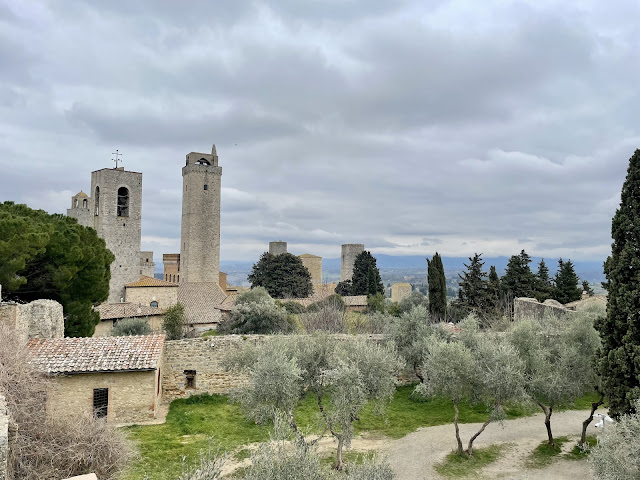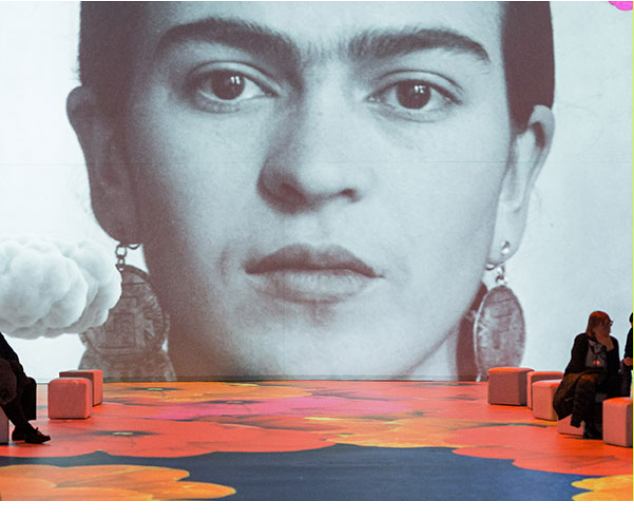San Gimignano - Tuscany, Italy
San Gimignano, a small, walled village located between approximately Florence and Siena, is famous for its fascinating medieval architecture and towers that rise above of all the other buildings. The old medieval part of town - which is where you will want to visit, is set on the top of an hill, and offers an impressive view of the city and the surrounding valley, which epitomises Tuscan countryside.










At the height of its glory, San Gimignano's patrician families had built around 72 tower-houses as symbols of their wealth and power. Although only 14 have survived, San Gimignano still retains its medieval appearance. Listed as a UNESCO World Heritage Site since 1990, San Gimignano offers you the chance to step back in time in this incredible place.
As for gustation and libations, meat lovers will find lots of prosciutto, spalla (shoulder ham) and salami in the providores in San Gimignano. Cured wild boar meat (cinghiale) is very popular, as you can tell from the many stuffed wild boars greeting visitors at the entrance of the food shops. There is an abundance of Soprassata, wrapped in a jute cloth, hanging on racks in the shops. Other traditional meat products include buristo (a type of salami), salsiccioli (traditional sausages) and meat from the Cinta Senese, the white-belted pig that is unique to this region.




The most typical cheeses you’ll find here are Pecorino Fresco (under-ripe cheese), Pecorino Semistationato (medium matured cheese) and Pecorino Stagionato (matured cheese). There is also the Marzolino, a spring cheese that’s typically oval in shape.

San Gimignano’s reputation for its Vernaccia wines has been noted since medieval times. It is said that Dante, Michelangelo and the many poets who have visited this beautiful town all raved about Vernaccia wine, so the Vernaccia di San Gimignano DOCG comes highly recommended.
Of course, San Gimignano also produces quality reds such as the San Gimignano Rosso DOC, San Gimignano DOC Rosé, the traditional Tuscan Chianti Colli Senesi and the San Gimignano Vin Santo DOC, a classic dessert wine.
If you want to know more about San Gimignano wines, head for the Museo del Vino di San Gimignano, located just near the Piazza Duomo. At the Museo del Vino you can learn about the local San Gimignano vine cultivation and wine production, plus as a bonus, they also offer a very generous wine tasting here. Of course many vineyards dot the route to San Gimignano as well that you can visit for tastings and support.

You will also start to see the more ornate crafts usually associated with further south of Italy here as well.

You can get to San Gimignano relatively easily by bus or train with one change at the small town of Poggibonsi (which is one stop from Siena). Car is convenient as well but note parking is only allowed at the parking station near the walled city. We went by bus from Florence, it was scenic (unlike the train) and it drops you right to the door!
If you are super keen you can hike there as a full day hike. Details can be found here.










At the height of its glory, San Gimignano's patrician families had built around 72 tower-houses as symbols of their wealth and power. Although only 14 have survived, San Gimignano still retains its medieval appearance. Listed as a UNESCO World Heritage Site since 1990, San Gimignano offers you the chance to step back in time in this incredible place.
As for gustation and libations, meat lovers will find lots of prosciutto, spalla (shoulder ham) and salami in the providores in San Gimignano. Cured wild boar meat (cinghiale) is very popular, as you can tell from the many stuffed wild boars greeting visitors at the entrance of the food shops. There is an abundance of Soprassata, wrapped in a jute cloth, hanging on racks in the shops. Other traditional meat products include buristo (a type of salami), salsiccioli (traditional sausages) and meat from the Cinta Senese, the white-belted pig that is unique to this region.




The most typical cheeses you’ll find here are Pecorino Fresco (under-ripe cheese), Pecorino Semistationato (medium matured cheese) and Pecorino Stagionato (matured cheese). There is also the Marzolino, a spring cheese that’s typically oval in shape.

San Gimignano’s reputation for its Vernaccia wines has been noted since medieval times. It is said that Dante, Michelangelo and the many poets who have visited this beautiful town all raved about Vernaccia wine, so the Vernaccia di San Gimignano DOCG comes highly recommended.
Of course, San Gimignano also produces quality reds such as the San Gimignano Rosso DOC, San Gimignano DOC Rosé, the traditional Tuscan Chianti Colli Senesi and the San Gimignano Vin Santo DOC, a classic dessert wine.
If you want to know more about San Gimignano wines, head for the Museo del Vino di San Gimignano, located just near the Piazza Duomo. At the Museo del Vino you can learn about the local San Gimignano vine cultivation and wine production, plus as a bonus, they also offer a very generous wine tasting here. Of course many vineyards dot the route to San Gimignano as well that you can visit for tastings and support.

You will also start to see the more ornate crafts usually associated with further south of Italy here as well.

You can get to San Gimignano relatively easily by bus or train with one change at the small town of Poggibonsi (which is one stop from Siena). Car is convenient as well but note parking is only allowed at the parking station near the walled city. We went by bus from Florence, it was scenic (unlike the train) and it drops you right to the door!
If you are super keen you can hike there as a full day hike. Details can be found here.
There is limited accommodation in the old city and much of the accommodation is situated a distance away- a day trip is probably enough to see what you need unless you are wanting to spend more time exploring the area.
Like all towns, you should check out the Duomo, the Piazza and of course the remaining towers while in the city.
I will let the pictures tell the rest of the story, but needless to say, San Gimignano is a bucket list location that you should try to fit on your Italian itinerary with incredible scenery, history wines and foods to explore.
This blog is part of the Rose-goes Europe series.








